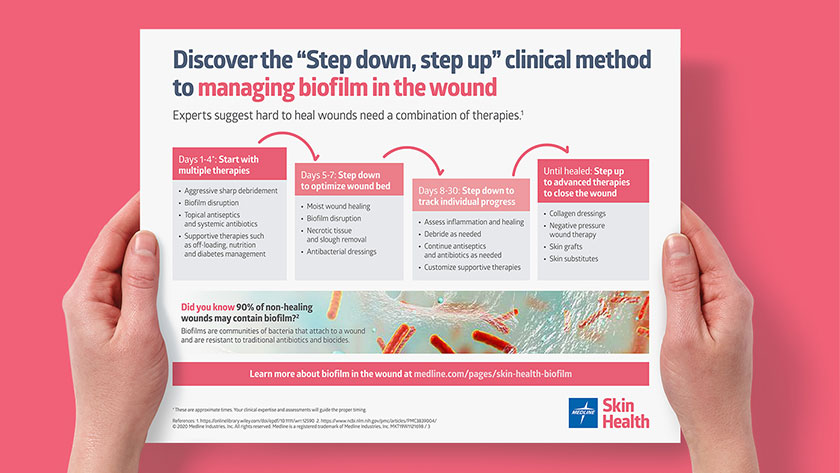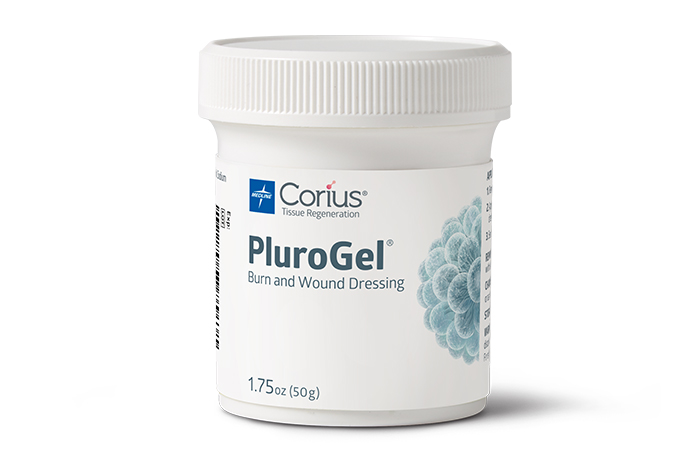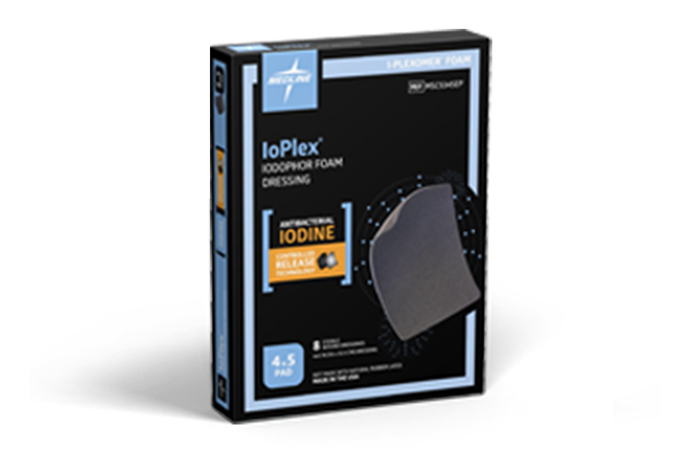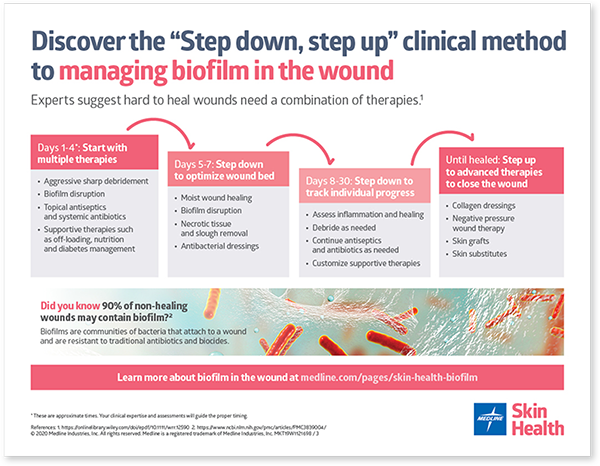Biofilm in chronic wounds: Take a step down, step up approach

Studies show that up to 6 million people in the United States have non-healing wounds, costing more than $3 billion a year.¹ When a wound isn’t following expected healing phases, it may be due to any number of barriers, both local and systemic, including age, diabetes, obesity and the presence of biofilm.
Biofilms are bacterial communities that physically attach to a surface. In both acute and chronic wounds, biofilms may present the most significant barrier to healing because they don’t respond well to traditional antibiotics or biocides.
Up to 90%
Wounds that have biofilm²
6 million
Number of people in the US with non-healing wounds1
$3 billion
Cost of non-healing wounds annually1

PluroGel surfactant-base gel: shown to prevent and disrupt biofilm in vitro4

IoPlex iodophor foam dressing: reduces bacterial burden within the wound dressing and shown to manage biofilm in vitro5
Discover the new paradigm for chronic wound care
Experts from around the world agree that the best way to fight biofilm involves a combination strategy.³ A recent consensus document describes a step down, step up approach to battling biofilm, calling it a “new paradigm for wound care.”³
We’ve created a downloadable poster that helps simplify the step down, step up concept. Share it with your staff as a strong visual reference to help standardize biofilm management.

Click here for the “Step down, step up” downloadable poster.
Tools to help you step down, step up
The step down, step up strategy includes aggressive sharp debridement as well as a combination of topical therapies that address biofilm in various ways. Here are two proven tools that you can incorporate into your step down, step up approach to managing biofilm:

PluroGel surfactant-base gel: shown to prevent and disrupt biofilm in vitro4

IoPlex iodophor foam dressing: reduces bacterial burden within the wound dressing and shown to manage biofilm in vitro5
It’s important to remember that there’s no one treatment plan for managing biofilm for all patients. Each patient may exhibit different biofilm colonizations and have different comorbidities that determine the best therapy. You may even toggle between two steps until the wound bed is prepared for a different therapy. Use the poster as your guide.
Key takeaway
Biofilm is a common barrier to wound healing and requires the right tools and approach to manage it effectively. Implementing the step down, step up approach can help you care for your patients by reducing the biofilm burden, inhibiting further growth and leading to faster wound healing. Download this poster as a guide.
Read the complete “Consensus guidelines for the identification and treatment of biofilms in chronic nonhealing wounds”
References:
- https://www.ncbi.nlm.nih.gov/pmc/articles/PMC2903966/
- https://www.ncbi.nlm.nih.gov/pmc/articles/PMC3839004/
- https://onlinelibrary.wiley.com/doi/epdf/10.1111/wrr.12590
- Yang Q, Larose C, Porta AD, Della Porta AC, Schultz GS, Gibson DJ. A surfactant-based wound dressing can reduce bacterial biofilms in a porcine skin explant model. International Wound
- Journal. 2017;14(2):408-413
- Data on file

